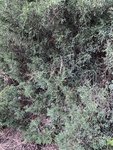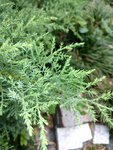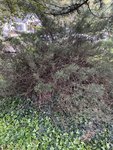@Wires_Guy_wires ,
I know 'Blaauw' was a cultivar developed in EU, but at least in my area, it was apparently imported and propagated in the USA. Around Chicago, it is a fairly common juniper for landscape plantings, planted between 1960 and 1980. I believe Synsyvelt Nursery had been propagating it in the Chicago area. They apparently imported it, and were selling it openly, so either they were paying rights if required or they felt it was not trademark or patent protected. In some pages 'Blaauw' is listed as a hybrid, in some references it is listed as a Shimpaku. Colin Lewis worked on one with me back a number of years ago, he did think it was a Shimpaku and spoke rather highly of its quality. As sometimes happens, trees worked on the wrong time of year in a workshop, often don't survive. Alas, I no longer have the 'Blaauw'.
Ah awesome, I didn't know that were in the US since so long ago.
I think blaauw is a shimpaku chinensis, it's very similar to kishu. But I haven't been able to find any documentation of it being a hybrid.
We have more or less an ancient 'breeders right' in our country as opposed to trademarks or patents. It is as old as the tulip boom, originating around the 1630's. One could get those rights by mailing themself in threefold a document and leaving it datestamped and unopened. One for the government, one for the 'patent' office and one for them self. Because of the date stamp and the post office originally being state owned, a person is able to prove that he came up with the idea first and that the government was involved. So they get to keep the rights for a certain amount of time. In some cases, this system still applies. Especially in creative fields of work like painting and writing.
Monsanto tried to convince us to go for a patented system, but we didn't budge. So they just bought up all vegetable breeders that were in their way and let them keep their original name or let them drown by cutting their budgets to zero. We have four or five vegetable companies that are Monsanto/Bayer owned but still operate under the original name. As a former insider, I know some of those scars haven't healed yet. We're vicious traders at heart and our history isn't very nice, but the plant community in our country used to be very family-like and courteous.
Don't pin me down on it, but as a breeder the Dutch law protects you as creative genius for 25 years by default; nobody can sell your cultivar without paying you a fee. After those 25 years you can have that patent extended once, and once only. After that, the cultivar is common good and there is no way to keep it to yourself anymore. Somewhere in the 1990's, the system was updated to give more polished definitions about what a cultivar is, and of course, the Dutch being the Dutch: someone figured they could ask a bucketload of money for registration and for a rejection of said registration.
If memory serves me right, a true patent would last for at least 40 years.
US law doesn't recognize this system (also thanks to Monsanto, I don't know if it's in the Monsanto protection act as well) so as soon as plant cultivars protected under breeders rights hit US soil, the Dutch company should either file a patent in the US, or accept that it's a free for all. As far as I know there hasn't been a single case in favor of the Dutch.









